What are Side Steps | Nerf Bars | Truck Steps ?
Many Truck owners are familiar with the concept of Side Steps aka Nerf Bars, but some new off-road truck enthusiasts might not be familiar with the utility that Nerf Bars | Side Steps offer. Side steps or Nerf Bars are steps mounted to the side of lifted trucks to offer ease in getting in and out of the truck. There are two types of Nerf Bars | Side Steps , fixed ones and automatic ones.
Fixed ones are cool and all but if you own a nice lifted truck you will want to go with Automatic Side Steps. And its even cooler when you install them yourself. This DIY tutorial will teach you how to install automatic side steps at home.
Automatic Side Step Installation Tutorial on Ford F-250 Super Duty Crew Cab
We went and got our hands on AMP Power Step . All the mentioned components fit very well to the stock mounting points, the wiring harness was the right size for the crew cab, and the kit included some nice details such as butt connectors, cable ties and connecting wires.
The operation of the steps is just cool. When you open any door, the step on that side deploys very quickly so you don’t miss a step getting in. When the doors are closed and the steps are up you cannot see them, unless you happen to be two feet tall.
The Power Step costs about $1,200, and you can save yourself a couple of hundred dollars by installing it yourself. When ordering the kit, be sure to pursue any information available on AMP’s website about your specific truck model. You can download the installation guide and scroll down until you get to the wiring guide. Find the page that is specific to your truck and look for any additional kits required. In our case we needed some single diodes.
Here’s how we got the install done on a 2001 Ford F-250 Super Duty Crew Cab using a basic tool kit in our home garage:
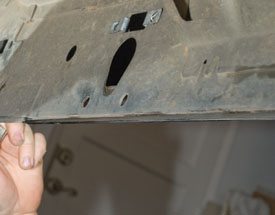
We started by attaching the motors to the rear linkage assemblies. A gear cover/gasket is situated between the motor and linkage and held together with 3 hex-head bolts.
The second set of holes can be located from the front in the inside wall of the body exterior on the passenger side of the truck.You might have to get your head under the frame rail and look up and toward the outside of the vehicle.
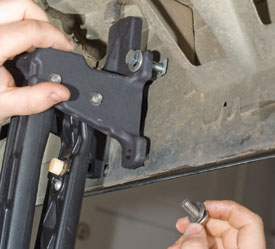 |
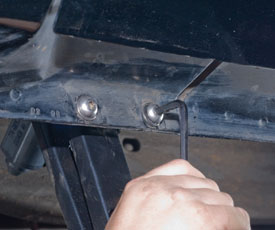
The button-head bolts and stainless steel washers are supposed to go through the outside of the pinch weld and into the threaded holes of the assembly.
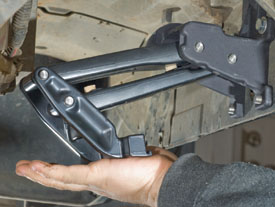
With the idler (motor-less front) assembly in place, fold it back to make sure it clears the
Banks TransCommand, which is mounted near the out side of the frame rail.
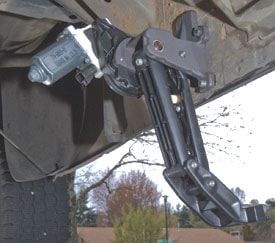
The whole process repeated for the rear assembly in the set of holes closest to the rear tire and moved across to the driver’s side.
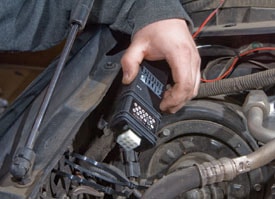
The supplied zip ties were used to attach the control box inside the engine bay, the harness was connected to the controller.
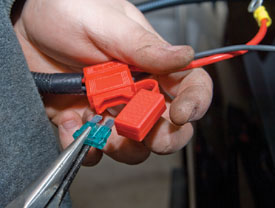
The next step was to open the inline fuse holder and remove the fuse.
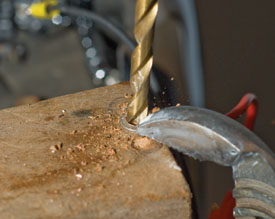
The terminal ends weren’t large enough so they had to be drilled out. You may use a large pair of Channel locks, as they work well to clamp the end to a block of wood for safe drilling.
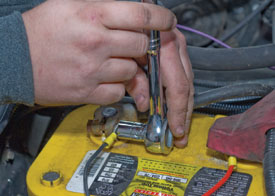
Then the ends were connected to the clamp bolts on the battery terminals.
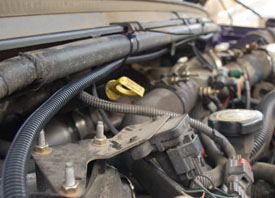
The short leg of the harness was threaded out of the engine bay between the firewall and the fender well on the passenger side, and the long leg is threaded across the top of the firewall and then between the firewall and the fender well on the driver side.
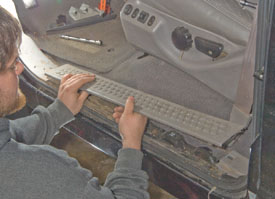
The step plate inside each door was removed and the carpet was rolled back.
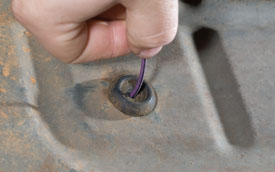
The floor grommet was punctured and the purple trigger wire was pulled from each side of the harness up through the floor on each side of the truck.
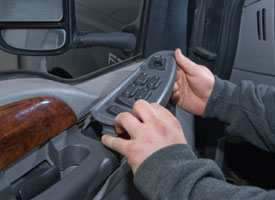
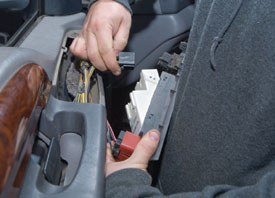
The door lock controls were unplugged.
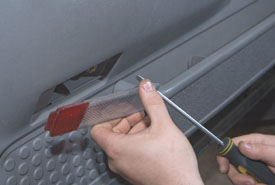
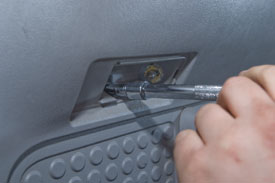
The door light lens needs to be opened and the door panel mounting bolts were also removed.
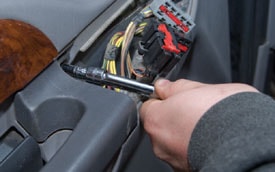
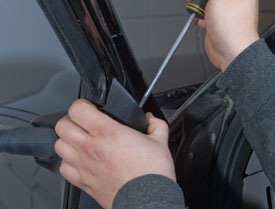
The door trim panel near the A-pillar comes off with a standard screwdriver.
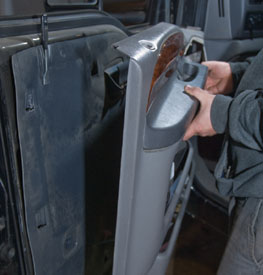
The door panel was removed by lifting up and over the lock pin, which pulls out the tabs on the bottom.
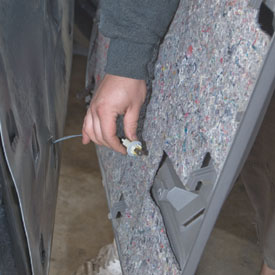
Be careful to fish the light fixture out of the back before setting the door panel aside.
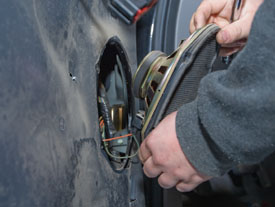
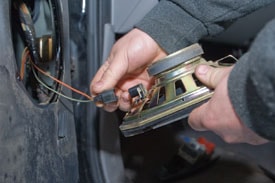
The speaker needs to be detached and pried out of its door mounting hole.
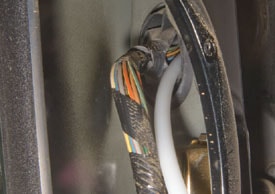
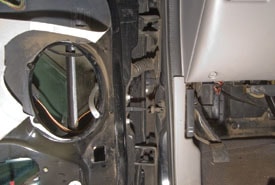
Be sure to unplug the speaker before setting it aside.
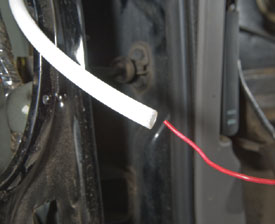
The AMP Power Step was supplied with a tube, which we fed through the speaker opening, past the grommet and through the wire chase into the cab.
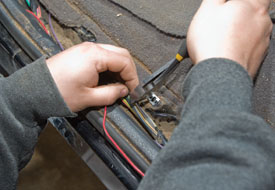
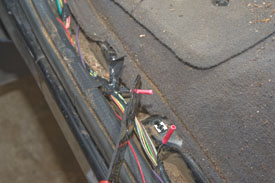
With the tube in place, a wire can be threaded through it.
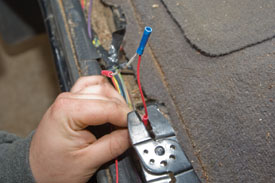
The rear door-ajar wire was located under the sill plate and cut.The butt connectors were attached to each side of the now-cut door-ajar wire.A single diode harness was installed in between the two halves of the door-ajar wire.
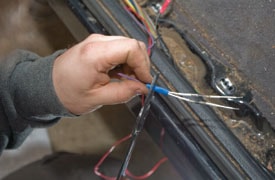
The purple trigger wire was routed to go under the floor and into to the main AMP Power Step wiring harness, to the double diode harness. One leg of the double diode gets connected to the red wire running into the door and the other leg goes to the single diode, which is now connected to the rear door-ajar wire.
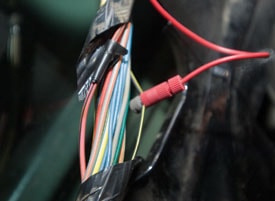
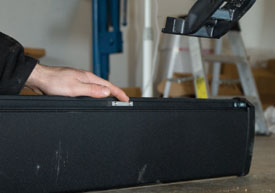
We tapped into the front door-ajar wire inside the door panel.
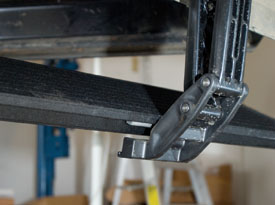
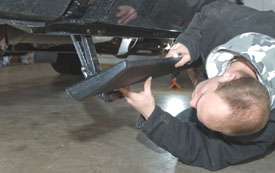
The sliding T-nuts were located and lined up with the corresponding grooves in both arms. Next the steps were bolted on to the arms using the hex head screws included with our AMP Powerstep Kit.
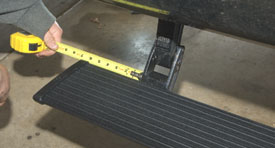
The last step is to match the position of the steps on the arms for both sides of the truck with the help of a measuring tape..

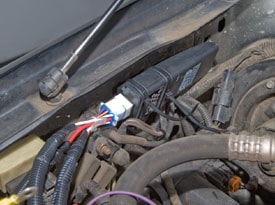
Comments
Post a Comment
We love to connect with like minded car enthusiasts. We encourage you to comment and give us your feedback, queries and suggestions.